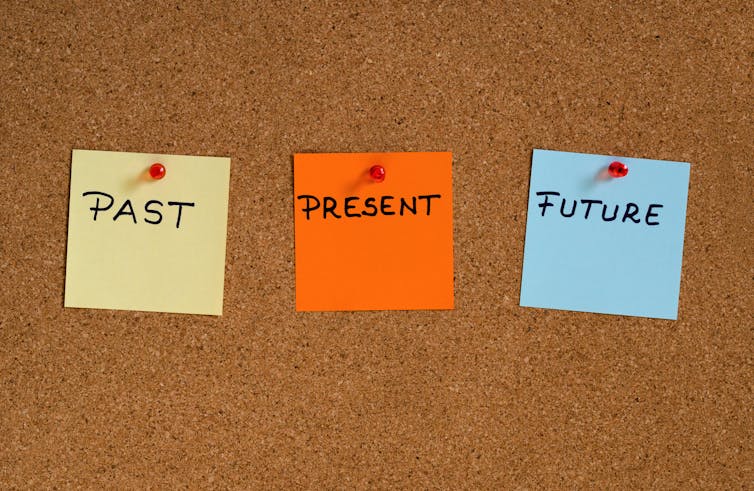Key Takeaway:
Modern physics suggests that time may be an illusion, as Einstein’s theory of relativity suggests the universe is a static, four-dimensional block. J.M.E. McTaggart, an English philosopher, published a paper in 1908 arguing that time is unreal using logic alone. He proposed two ways to describe time: the “B-series” and the “A-series”. The B-series arrangement is static, meaning it doesn’t change, while the A-series is circular, meaning it requires change. McTaggart concluded that time cannot be real, as neither works. Over a hundred years later, philosophers are still searching for a solution. Some “A-theorists” try to define the A-series in a way that’s not circular, while others accept that the B-series describes reality and say McTaggart was wrong to require the series to change. Some “C-theorists” argue that the line of cards does not even have a direction from earlier to later.
Modern physics suggests time may be an illusion. Einstein’s theory of relativity, for example, suggests the universe is a static, four-dimensional block that contains all of space and time simultaneously – with no special “now”.
What’s the future to one observer, is the past to another. That means time doesn’t flow from past to future, as we experience it.
This clashes with how time is conceptualised in other areas of physics, such as quantum mechanics, however. So is time an illusion or not? One approach to find out would be to try to prove that time is unreal using logic alone.
In 1908, J.M.E. McTaggart, an English philosopher, published a paper arguing that we might be able to work out the unreality of time just using logical thinking alone.
Imagine that someone has given you a box of cards, each one representing an event. One card describes the year 2024, another one the death of Queen Victoria, and another the solar eclipse in 2026. The cards have been mixed up. You have been told to arrange these cards in a way that represents time. How would you go about doing it?
The first way is to use what McTaggart calls the “B-series”. You pick one card and place it on the floor. Then you take another one from the box and compare it with the one already on the floor. If it’s earlier, you put it to the left of it. If later, you put it to the right.
For example, the death of Queen Victoria goes to the left of the 2026 solar eclipse. The year 2024 goes to the left of the 2026 solar eclipse, but to the right of the death of Queen Victoria. You keep repeating this until you end up with a line of cards, any two of which are related using the earlier-later relation.
As you sit and look at the finished arrangement, you realise that something is missing. The line of cards is static. Once the cards have been put in place, nothing about their order changes. But, as McTaggart insists, you cannot have time without change.
Time is ultimately a measure of change, even according to physics. It is often identified as a rise in disorder – entropy – of a closed system. Take a cup of hot coffee. As it cools down, entropy rises. And you can tell roughly how long a cup of coffee has been standing there by its temperature. Any device that measures time, such as a clock, relies on change (ticks).
Remember, your original job was to arrange the cards in a way that represents time. But you ended up with something that doesn’t change. It would be odd to say that time does not change. So the B-series cannot capture time.
There is, however, another option. You can start again and try to arrange the cards using what McTaggart calls the “A-series”. You create three neat piles – on the left go all the cards describing events that happened in the past, like the death of Queen Victoria. In the middle go those happening in the present, like the year 2024. And on the right, those that will happen in the future, like the 2026 solar eclipse.
Unlike the B-series, this arrangement is not static. As time goes on, you have to move the cards from the right (future) pile into the middle (present) pile, and the ones from the (present) middle pile into the left (past) pile, where they stay forever. So there is clearly change happening here. Does that mean that the A-series describes time?
According to McTaggart, the A-series is circular. Your hand moving the cards from the left-hand pile into the middle one and then into the right-hand pile is a process that already happens in time.
You need to be in time to be able to perform this arrangement. But time is exactly what you are trying to capture. In other words, you already need to have time in order to describe time. This is circular, and circularity violates logic.

Let’s sum up. The B-series arrangement cannot describe time, because nothing changes about it. And change is required for time. So the B-series doesn’t work. The A-series does change, but unfortunately, it is circular. So it doesn’t work either. Since neither of these works, McTaggart concludes that time cannot be real.
A hundred years later
Over a hundred years later, philosophers are still searching for a solution. Some, called “A-theorists” try to define the A-series in a way that’s not circular.
Others, called “B-theorists”, accept that the B-series describes reality and say that McTaggart was wrong to require the series to change. Maybe all there is to time is just a line of events.
There are also “C-theorists” who go further and say that the line of cards does not even have a direction from earlier to later.
The year 2024 goes between the death of Queen Victoria and the 2026 solar eclipse. But the fact that we’re used to thinking of the death of Queen Victoria coming before the 2026 solar eclipse, rather than the other way around, is perhaps just a matter of habit. It’s like numbering planks on a fence: you can start from whatever end you want. The fence itself has no direction.
I’m not yet convinced that any of them are right, perhaps there are different ways of thinking about time altogether. Ultimately, time will tell.
And regardless of who’s right, what is remarkable is that McTaggart was able to get the argument going without any findings from science, but purely by thinking logically about the problem.





























